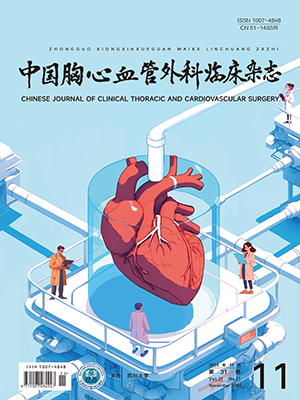Abstract: Objective To study the changes of the cyclic adenosine monophosphate (cAMP) and protein kinase A (PKA) expression of isolated rat hearts after diazoxide preconditioning (DPC), and to explore the possible mechanism of cAMP signaling pathway in myocardial protection by DPC. Methods Isolated working heart Langendorff perfusion models of 40 Wistar rats were set up and were divided randomly into four groups. For the ischemia reperfusion injury(I/R) group (n=10), 30 min of equilibrium perfusion was followed by a 60 min reperfusion of KrebsHenseleit (K-H) fluid. The DPC group (n=10) had a 10 min equilibrium perfusion and two cycles of 5 min of 100 μmol/L diazoxide perfusion followed by a 5 min diazoxidefree period before the 30 min ischemia and the 60 min reperfusion of K-H fluid. The blank control group (control group, n=10) and the Dimethyl Sulphoxide(DMSO) group (n=10) were perfused with the same treatment as in the DPC group except that diazoxide was replaced by natriichloridum and DMSO respectively. The activity of creatine kinase (CK) in coronary outflow, the activity of malonyldialdehyde (MDA) and superoxide dismutase (SOD) in myocardium were detected. And the scope of myocardial infarction and the concentrations of myocardial cAMP and PKA were also assessed. Results Compared with the I/R group, the level of MDA for the DPC group decreased significantly (8.28±2.04 nmol/mg vs. 15.52±2.18 nmol/mg, q=11.761,P lt;0.05), the level of SOD increased significantly (621.39±86.23 U/mg vs. 477.48±65.20 U/mg, q=5.598,P lt;0.05). After a 30 min reperfusion, compared with the I/R group, the content of CK decreased significantly (82.55±10.08 U/L vs. 101.64±19.24 U/L, q=5.598, P lt;0.05) and the infarct size reduced significantly (5.63%±9.23% vs.17.58%±5.76%, q=6.176,P lt;0.05) in the DPC group. The cAMP concentration in the DPC group was much higher than that in the I/R group (0.64±0.07 pmol/g vs. 0.34±0.05 pmol/g, q=14.738,P lt;0.05), and PKA concentration was also much higher than that in the I/R group [17.13±1.57 pmol/(L·min·mg) vs. 12.85±2.01 pmol/(L·min·mg), P lt;0.05]. However, there were no significant differences between the I/R group, DMSO group and the control group in the above indexs (P gt;0.05). Conclusion DPC significantly improves the releasing of cAMP and PKA, decreases oxygen free radicals, and relieves myocardial ischemia reperfusion injury. The cAMP signaling pathway may be involved in triggering the process of myocardial protection mechanisms of DPC.
Citation: HAN Jinsong,WANG Huishan,HAN Hongguang,et al.. Role of Cyclic Adenosine Monophosphate Signaling Pathway in Myocardial Protection by Diazoxide Preconditioning: Experiment with Isolated Rat Hearts. Chinese Journal of Clinical Thoracic and Cardiovascular Surgery, 2010, 17(5): 390-394. doi: Copy




